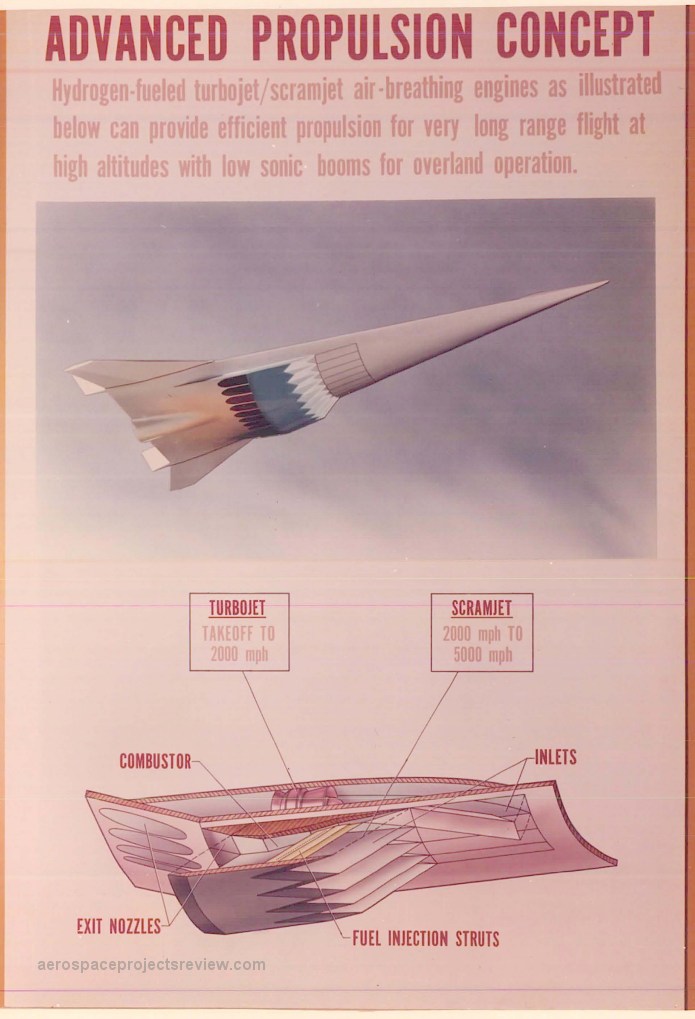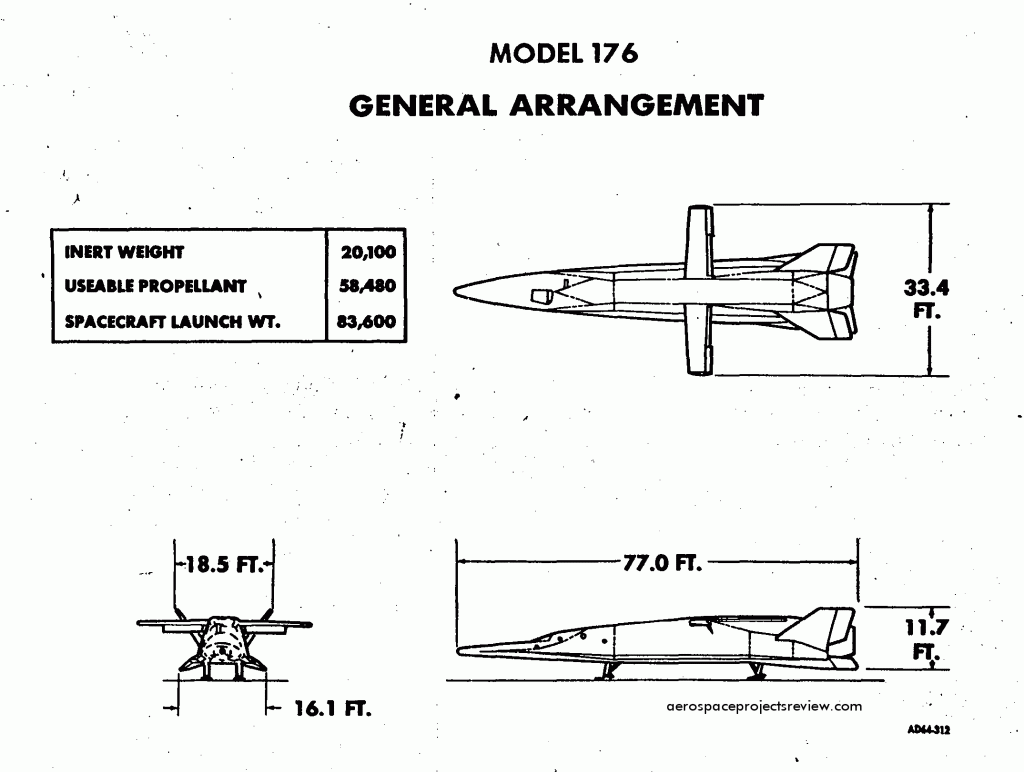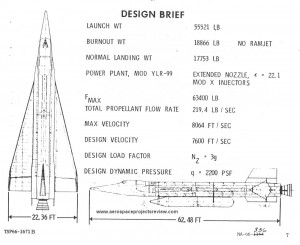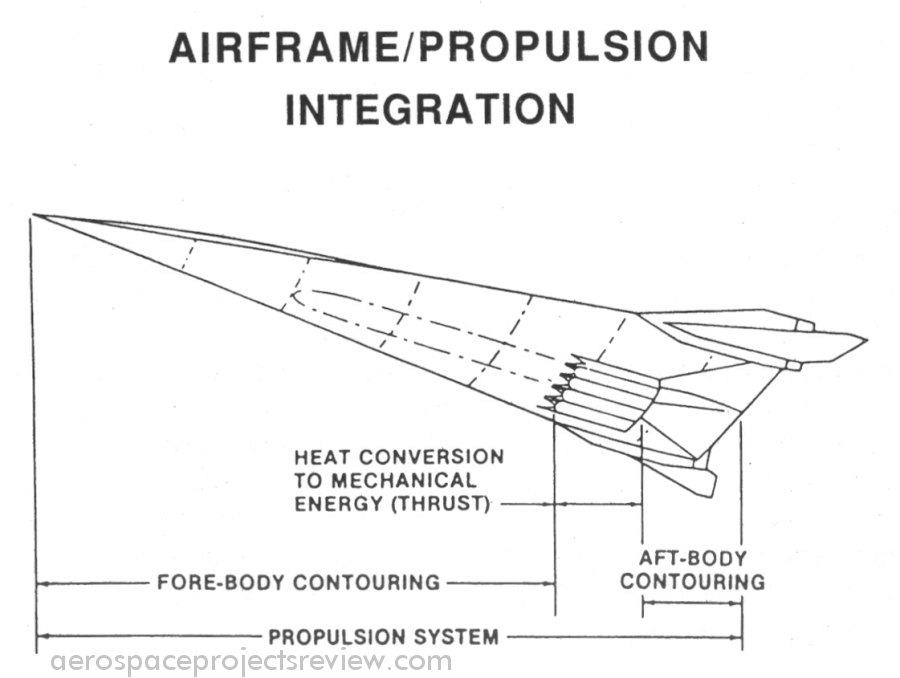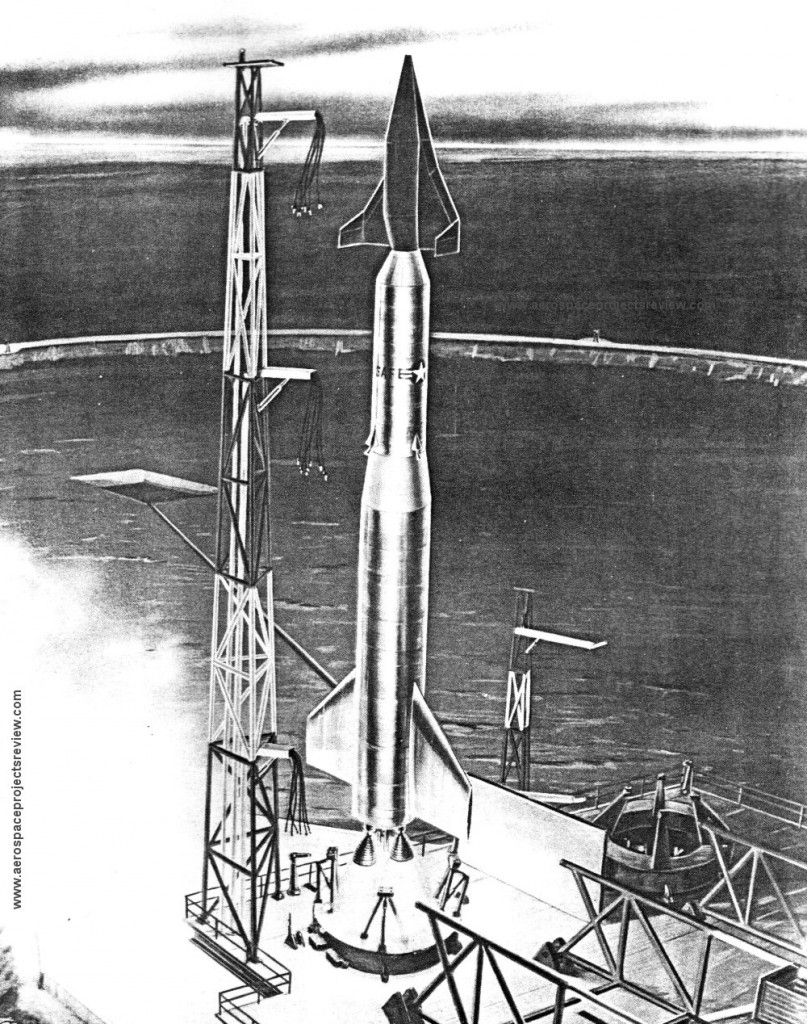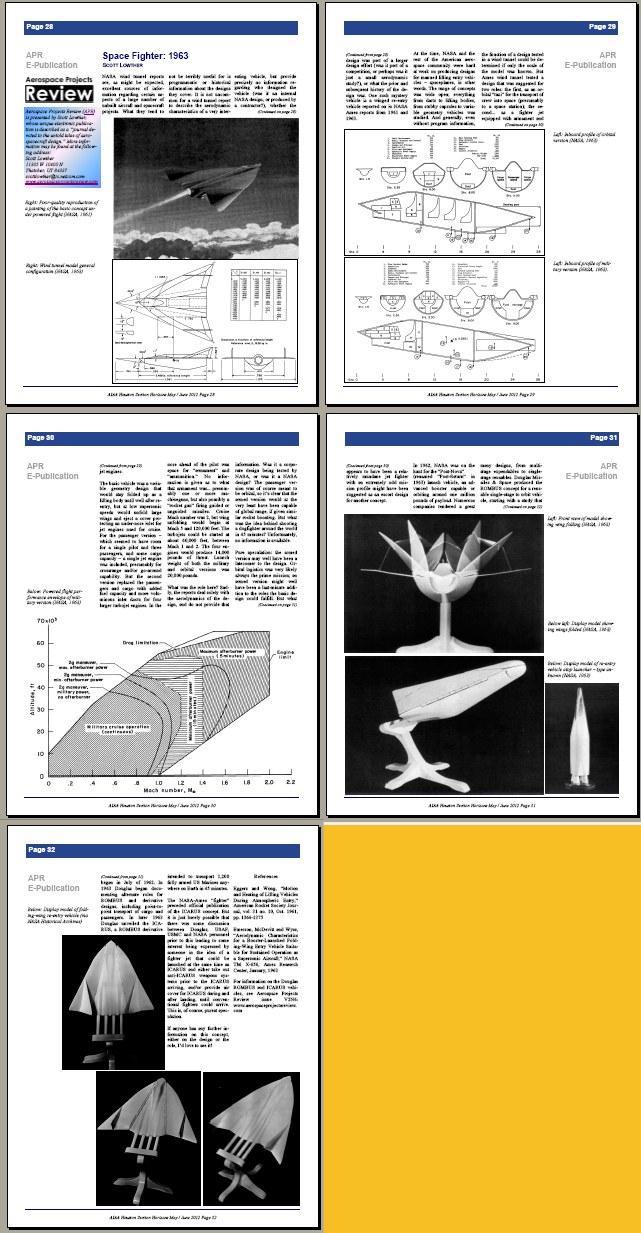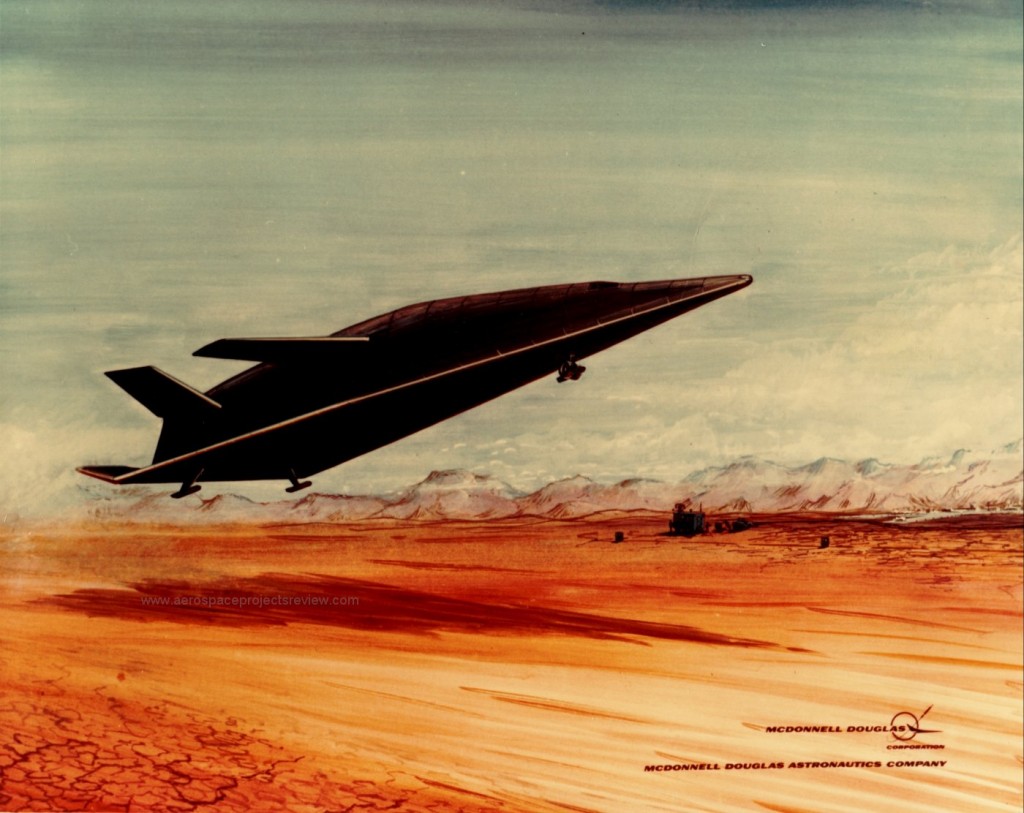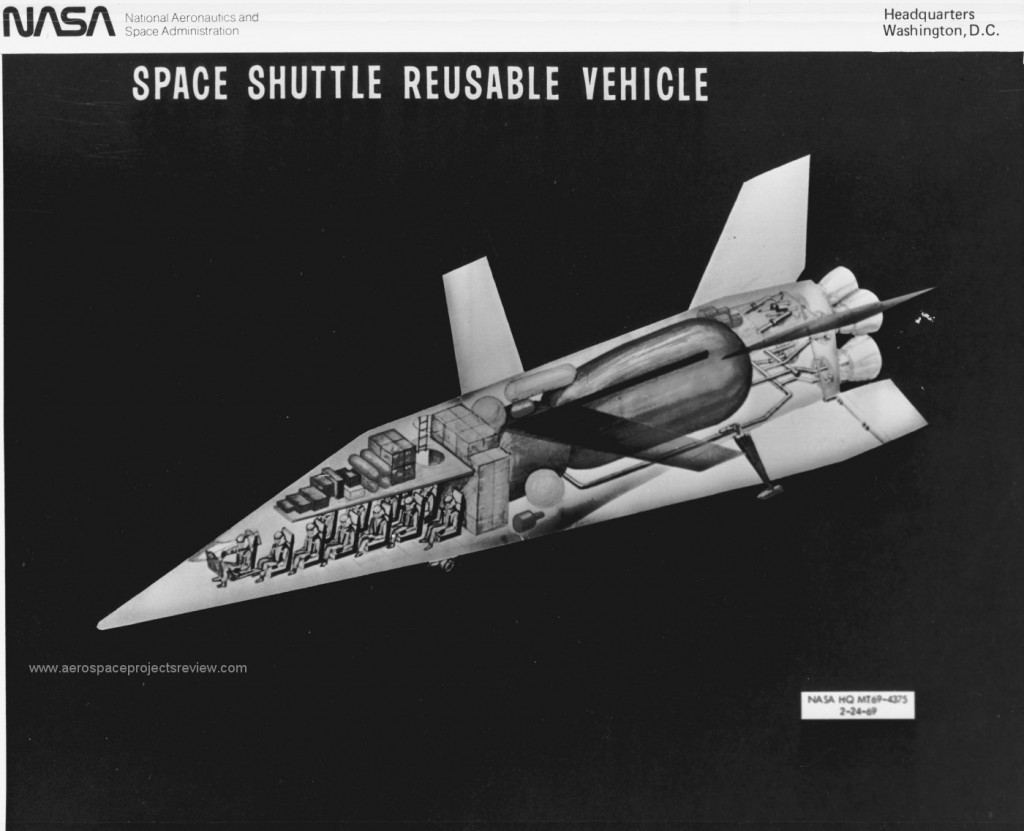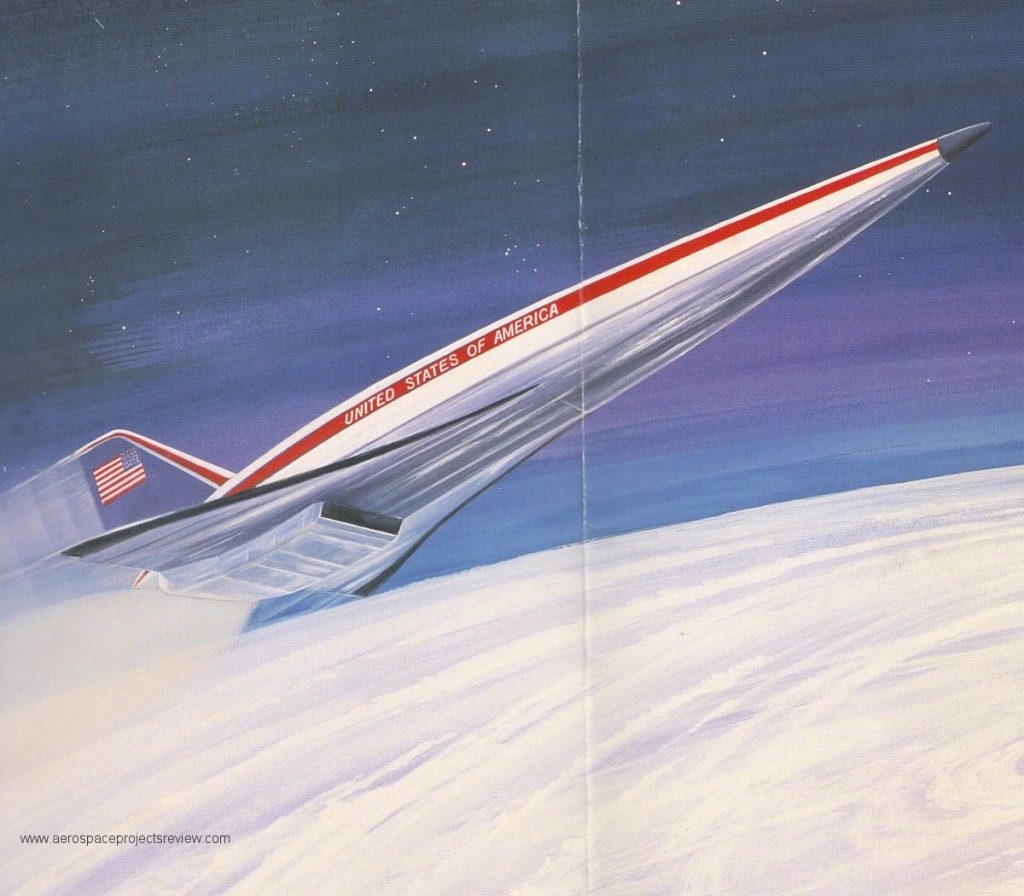A piece of NASA-Langley artwork describing the future of aeropropulsion… the scramjet engine. The provenance on the art is hazy at best… found in the uncatalogued collection of a former Langley engineer, it probably dates to the mid 1960’s. The aircraft illustrated here has been seen from the early 1960s up into the late 1980s, so that at best brackets the art. The aircraft has been used as a hypersonic transport and as the first stage of a space launch system. As shown here, the model used was *probably* a wind tunnel model repainted and repurposed as a display model… none of the diagrams I’ve seen of it have included the “hump” on the underside of the aft expansion ramp. Most likely that’s the connection point for the support “sting” for tunnel use. Alternatively, it *could* represent a fairing for a rather sizable rocket engine, though that seems unlikely… during scramjet operation the hump would not only mess with exhaust flowfields, it would also be subjected toa whole lot of thermal unpleasantness.
As of 1964, the GA of the Models 176, a lifting body, stowed-wing spaceplane. See HERE for late 1960’s artwork of a larger version.
A reproduction of admittedly dismal quality of a Martin Co. painting of their December 1958 Dyna Soar configuration at launch. This configuration, the product of a team-up of Martin and Bell, competed against Boeing (and other companies) and lost; what must have been grating for the Martin-Bell folks was that the Boeing design that won looked nothing like the final Dyna Soar design… which actually looked a whole lot like this vehicle.
The Dyna Soar is here being shown launched by a modified Titan I ICBM. This booster would have fallen far short of orbiting the Dyna Soar; instead it would have simply tossed it on a long hypersonic suborbital trajectory. This would have been a purely experimental aircraft, the natural follow-on to the X-15.
The AIAA-Houston chapter newsletter “Horizons” has published an article I wrote on a 1963 concept for a variable geometry spaceplane capable of both space station logistics and combat missions. You can download the May/June 2012 here: http://www.aiaahouston.org/
The McDonnell Douglas Model 176 was a generic spaceplane design derived from the FDL-7 (Flight Dynamics Lab – USAF Wright-Pat). It was incorporated into small spaceplanes adequate for taking a few crewmembers to a space station on up to Space Shuttle competitors. Below are two pieces of art (found in the NASA HQ historical archive) showing a late 1960’s concept for a Model 176 optimized for the ILRV (Integral Launch and Recovery Vehicle) role. ILRV was one of the immediate predecessors to the Space Shuttle program.
The Model 176 was a sleek dart-like design with stubby fins. While details varied from iteration to iteration, all (or nearly all) featured high aspect ratio variable geometry wings for landing.
NASA has recently uploaded to YouTube an early video presentation on the NASP, showing the initial “du Pont” configuration.
[youtube 2bkZ2Sbsjp0]
